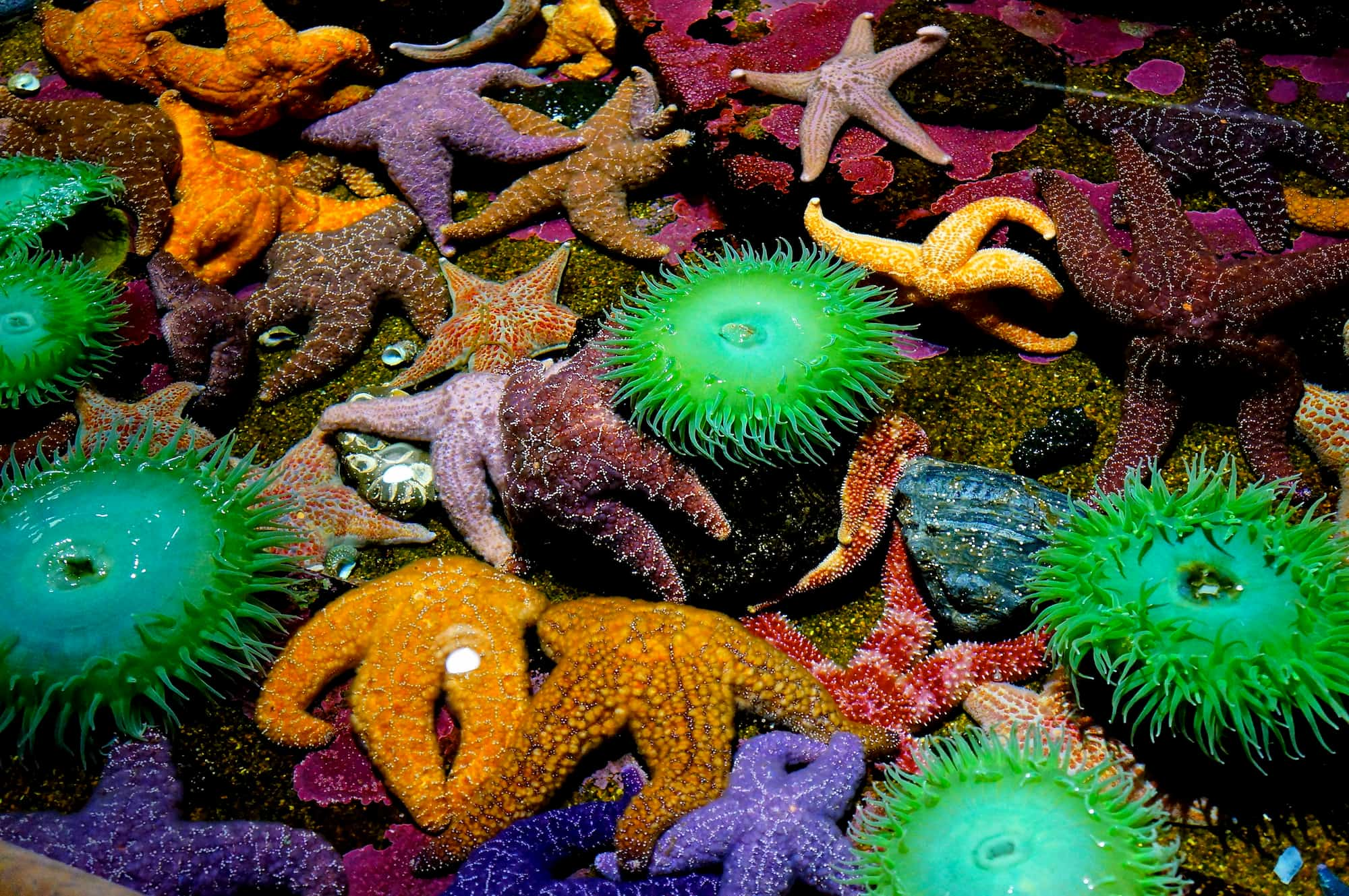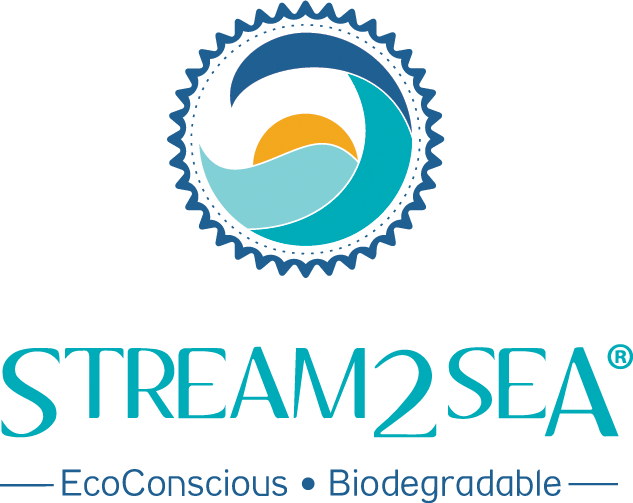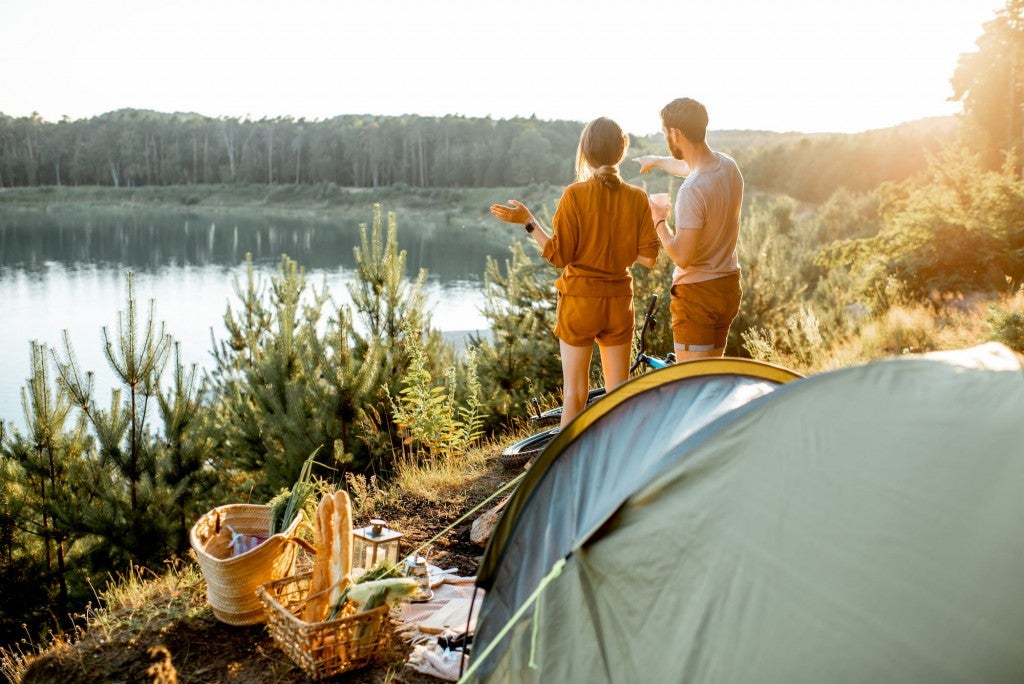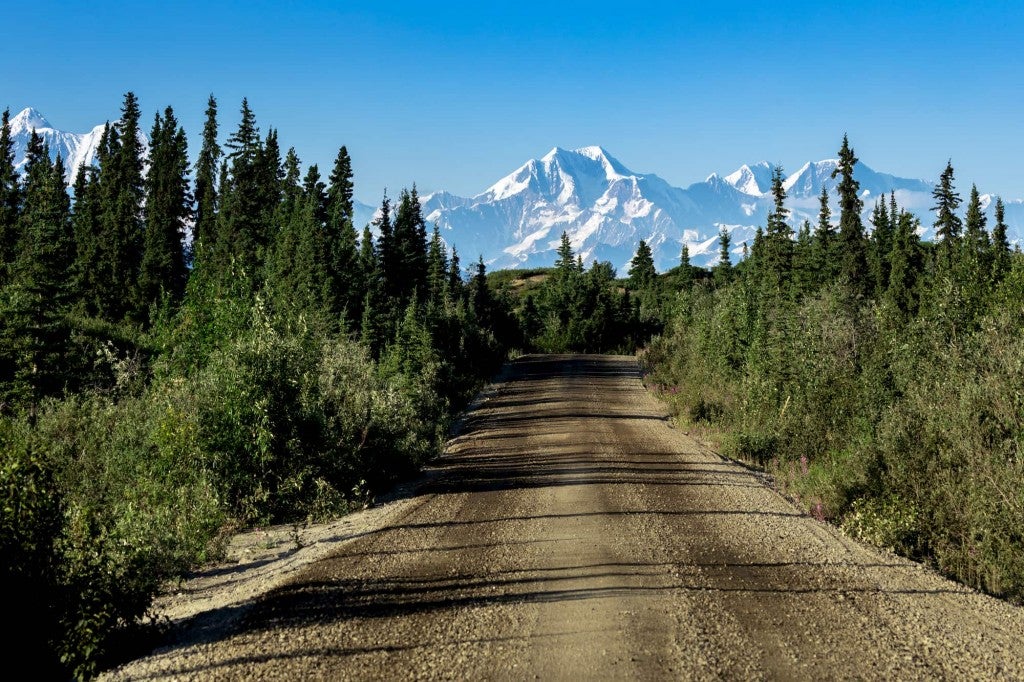This article about tide pool creatures is brought to you by Stream2Sea. Their eco-conscious, coral reef-safe sunscreens will protect your skin and our tide pool friends alike.
There’s a truly mind-bending variety of creatures living in tide pools up and down the west coast of the United States. But the types of tide pool creatures you’ll find will change, depending on where you’re looking and where you are. The sunny shores of southern California are home to some dramatically different sea life than the creatures you’ll find living in the cold waters of the pacific northwest, and learning the differences could take you a lifetime. That’s why we’ve put together this handy guide to help you identify some of the most common tide pool creatures found anywhere along the west coast.
How To Identify West Coast Tide Pool Creatures
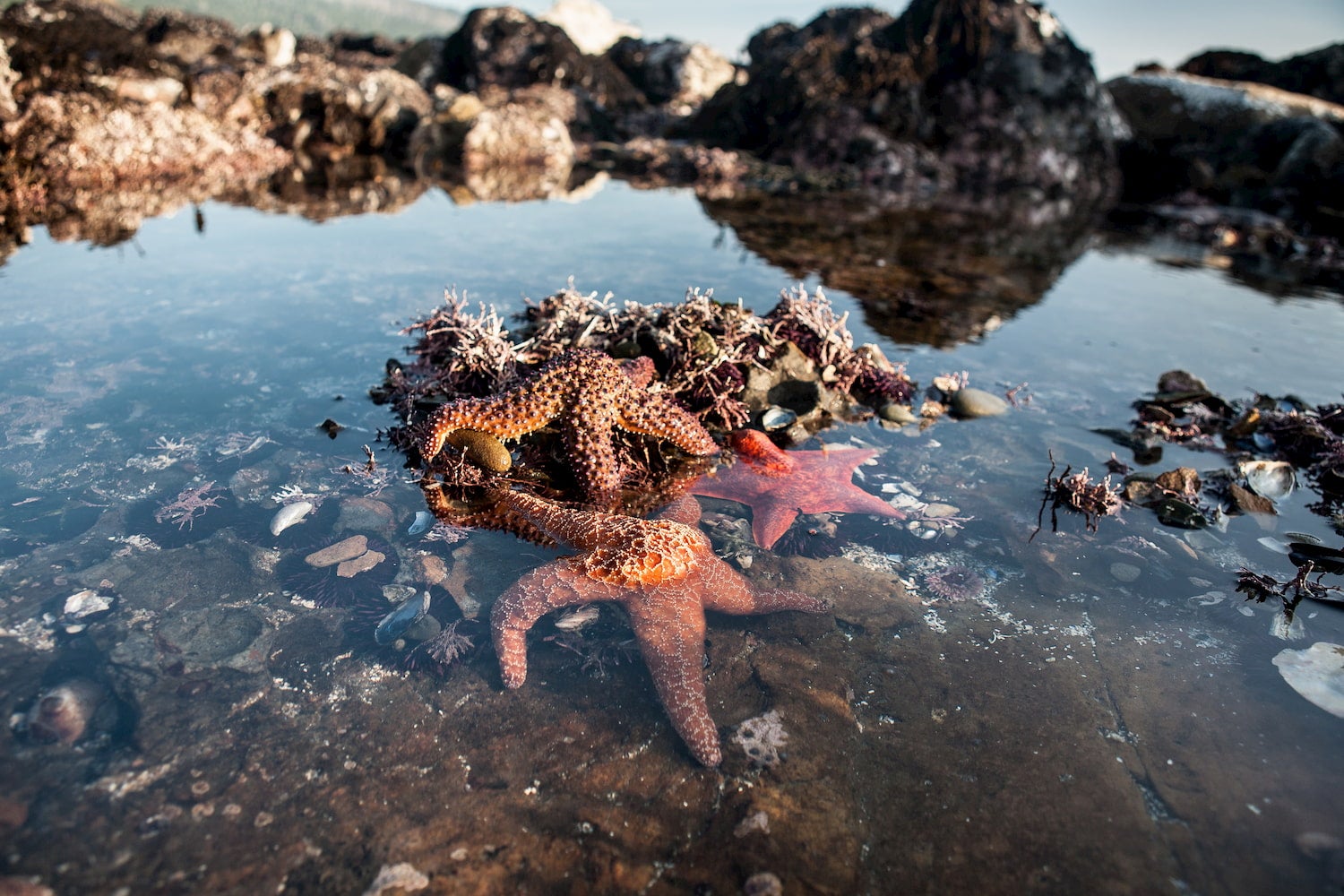
Let’s start with an oversimplified review of what tide pools are. According to NOAA (the National Oceanic and Atmospheric Administration), tide pools are isolated pockets of seawater that are found in “intertidal” zones—which are just areas where the ocean meets the land. However, the intertidal zones are then further divided into high tide, middle tide, low tide, and a lesser used fourth category called the spray zone. These zones are split up based on how much time they spend submerged in water or exposed to the air.
For the purpose of this article, we will try to avoid getting lost in the details of the different intertidal zones, and focus our energy on the interesting, colorful and sometimes freaky lifeforms that you’ll find in tide pools up and down the west coast.
Anemones
The Aggregating Anemone
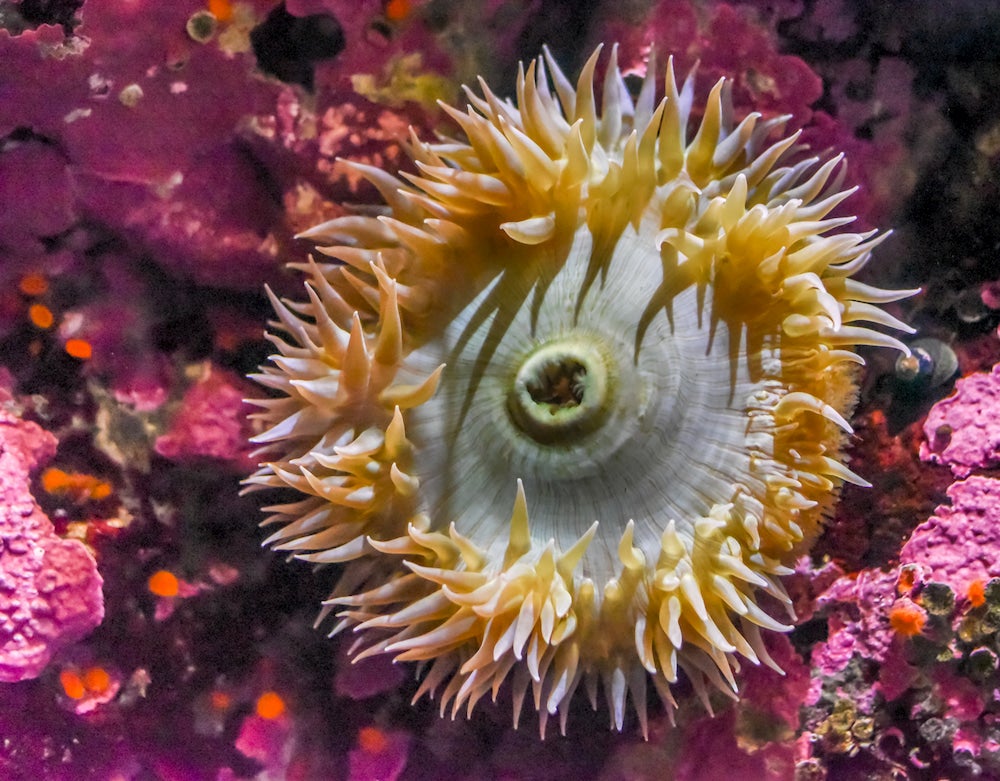
- Where? — Usually seen at or above sea level. From the low end of the middle tide zone, to the high tide zone. Regularly seen throughout California, Oregon & Washington.
- Colors? — Usually a pale-green color when open. But when they’re closed they look more like a gray-ish, rocky, shell-covered mess. And the vast majority of them will have pinkish tips on their tentacles (when open).
- Size? — Very small; can be under one-inch in diameter, and up to approximately 3-inches at the largest. Those found in the colder waters of the Pacific Northwest tend to be on the smaller side of the range, about 1-inch across.
- Other Info — This is the most common anemone you’ll find on the west coast. They are quite small but they tend to live in large tightly-packed colonies, which can give the appearance of one large moss-like lifeform. Tide pool visitors should take extra caution not to step on them when walking along rocks, as they are regularly covered in sand, bits of shell, and other ocean debris.
Starburst Anemone
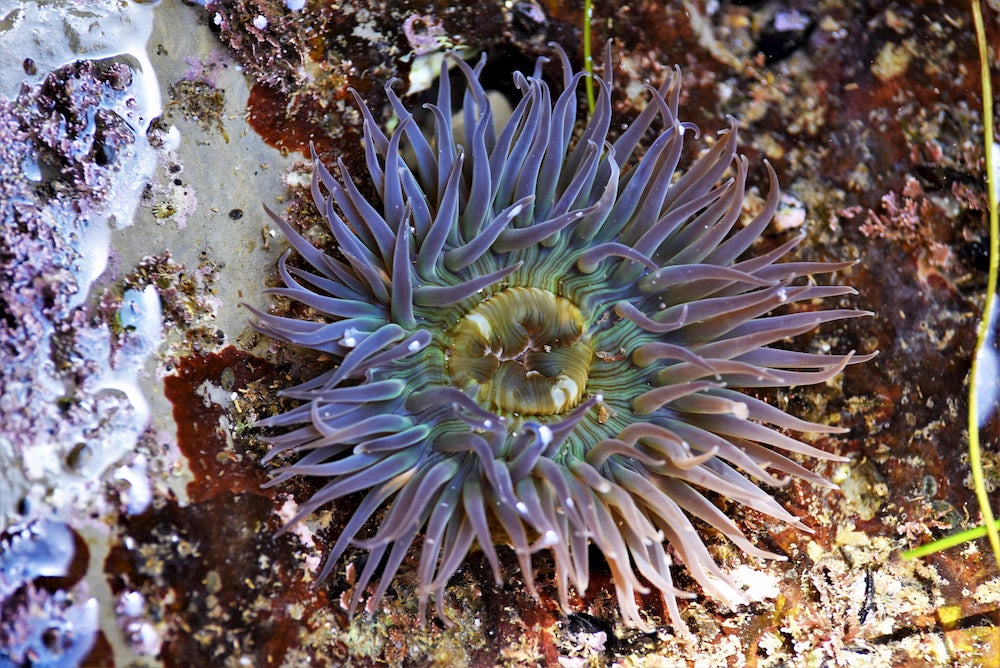
- Where? — Most likely to be found around southern California, where the water temperature is a bit warmer.
- Colors? — Typically somewhere between bright green and pale green, but you can also find them closer to the yellow and grayish end of the spectrum.
- Size? — Generally about 5-10 inches in diameter
- Other Info — These are the most common non-aggregating anemones around. If you see an anemone with gray or even white coloring, that means they probably spend most of their time in the shade under rocks. Sunlight plays a role in producing the green pigment seen on most starburst anemones.
Giant Green Anemone
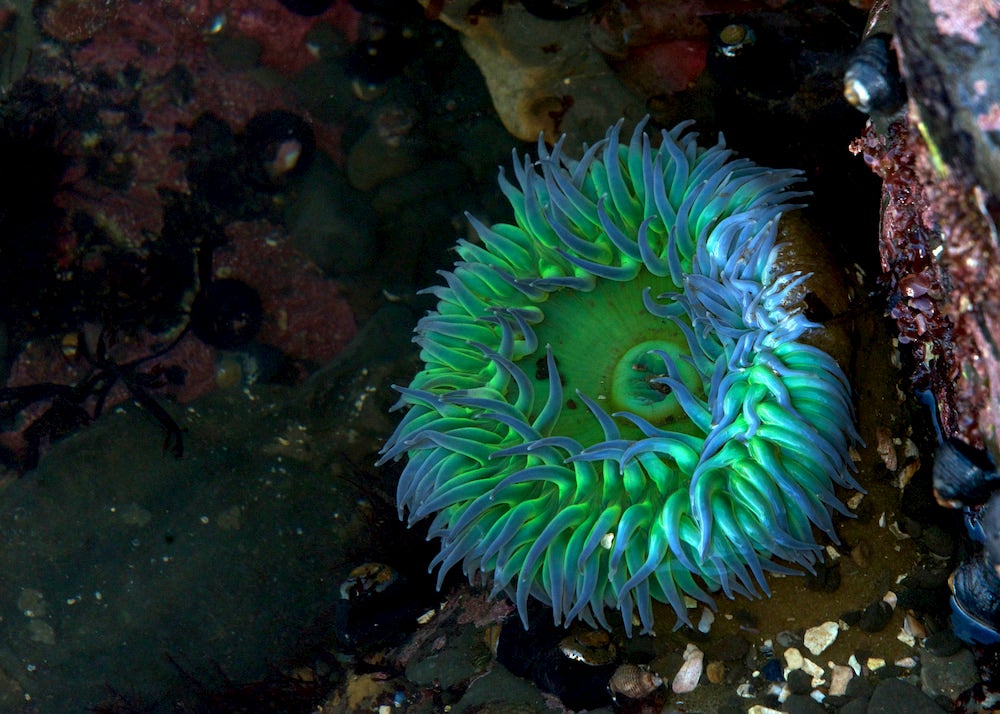
- Where? — Found around the low to middle tide zones, along the entire west coast. They’re commonly seen attached to rocks or manmade structures like support columns for bridges or piers.
- Colors? — Famously a bright, vivid green. But this color is usually only found on anemones that are submerged under water and relatively close to the surface, receiving plenty of sunlight. When not submerged they tend to appear dark green or even brown-ish.
- Size? — Approximately 6-10 inches in diameter.
- Other Info — Their lifespan is estimated to reach upwards of 80-150 years old. The most reliable way to tell Giant Green Anemones from Starburst Anemones is to look at the coloring in the middle of their bodies (on their oral disk). Starburst Anemones have lines radiating out in all directions from their oral disk, Giant Green Anemones have none. Look for lines first…if you see them, that’s a Starburst!
Sea Stars
Ochre Sea Star
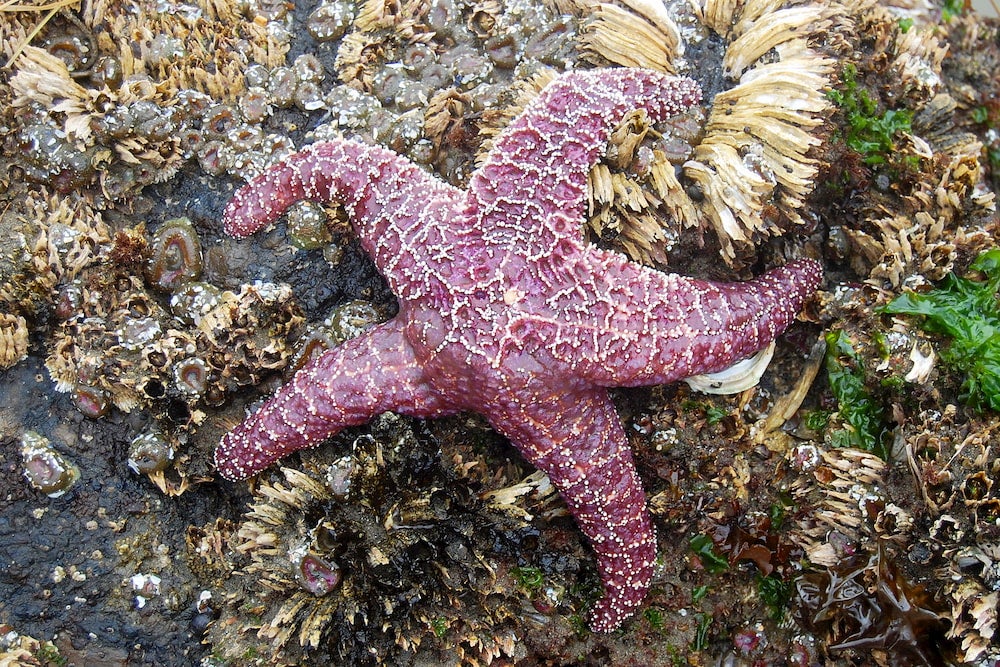
- Where? — Found around the middle to low tide zones. But they are resilient little guys, because they can also withstand a full 8-hours of air exposure, and they’ve found living in waters up to 90-meters deep.
- Colors? — Most commonly seen with a vibrant purple color. But their coloring also covers the orange, red, brownish, and yellow ends of the spectrum.
- Size? — Between 4-10 inches long. Nearly always having five rays (aka limbs/legs).
- Other Info — The Puget Sound area in northeast Washington has been called the sea star capital of the world because there are so many different kinds of sea stars that grow and live in the Sound.
Giant Sea Star
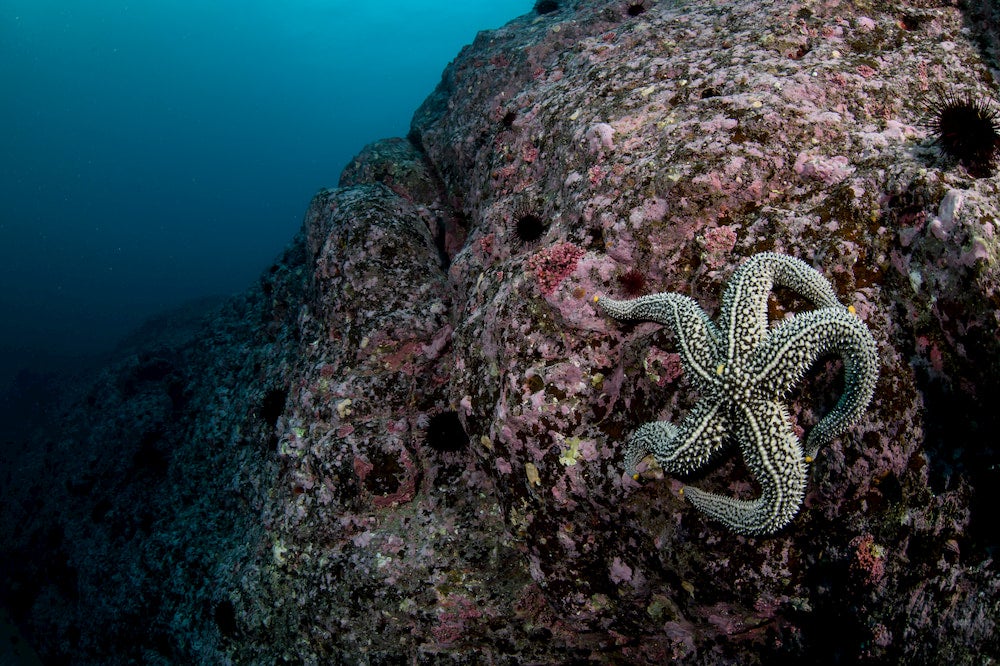
- Where? — Usually found around the low tide zone. Can be seen along the entire west coast, from southern California all the way up past Puget Sound and into Britsh Columbia.
- Colors? — Color varies a lot! Their body is usually a light brown/tan color, but occasionally they’ll have a purple, yellowish or grayish body. They also have thick spines covering their body that are usually a shade of blue, with some additional white, pink, or purple coloring at the tips of the spines.
- Size? — Their average size is similar to Ochre Sea Stars, around 8-10 inches. However, Giant Sea Stars that live further underwater (subtidal) can grow to be as large as 24-inches across!
- Other Info — You’ll most likely find them living right around sea level, but they have been known to live in water up to 300-feet deep. The best spots to look for these sea stars are on rocks, pier/bridge supports, or on in the sand at the water’s edge.
Sunflower Sea Star
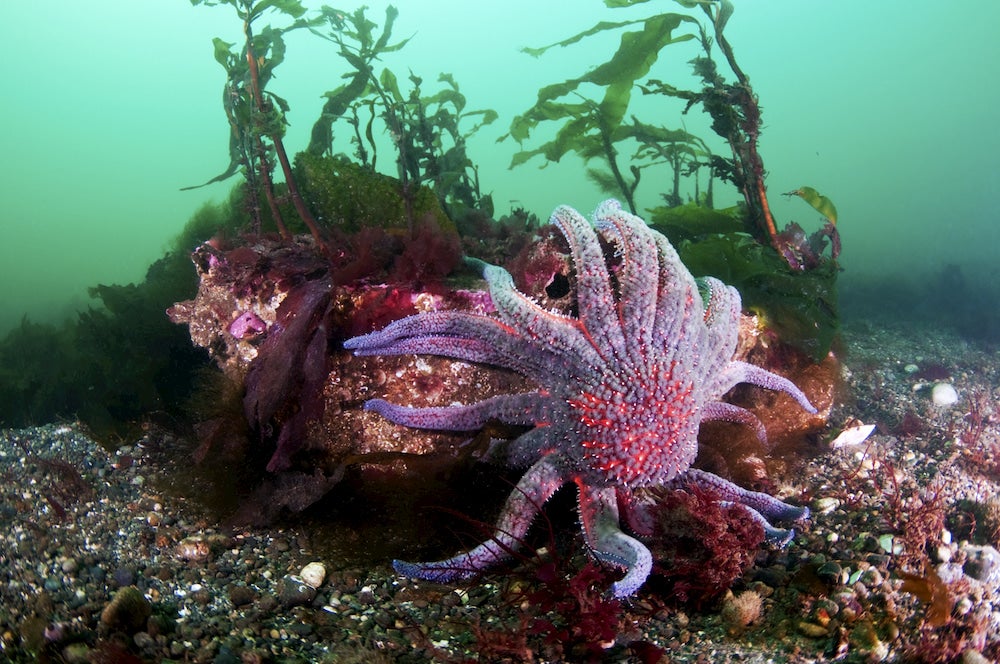
- Where? — Nearly always found in the subtidal zone (aka underwater). They prefer colder water, so their habitat ranges from Alaska, down through the Pacific Northwest, and then starts tapering off around the Bay Area of California.
- Colors? — Almost always either orange or pinkish. Sometimes found with purplish, yellowish or brownish coloring.
- Size? — They can grow to be nearly 3-feet across! But you can probably expect to see them closer to 12 or 18 inches in diameter. The largest sea stars have been found in deeper waters.
- Other Info — As juveniles, Sunflower Sea Stars have just five rays (limbs), but they steadily add more as they grow and age. Mature Sunflower Sea Stars commonly have 16-24 limbs. According to NOAA scientists, sunflower sea stars appear to be dying off at a shocking rate. Populations in California and Oregon have plummeted by more than 90% in just the past 5-10 years.
Crabs
Striped Shore Crab
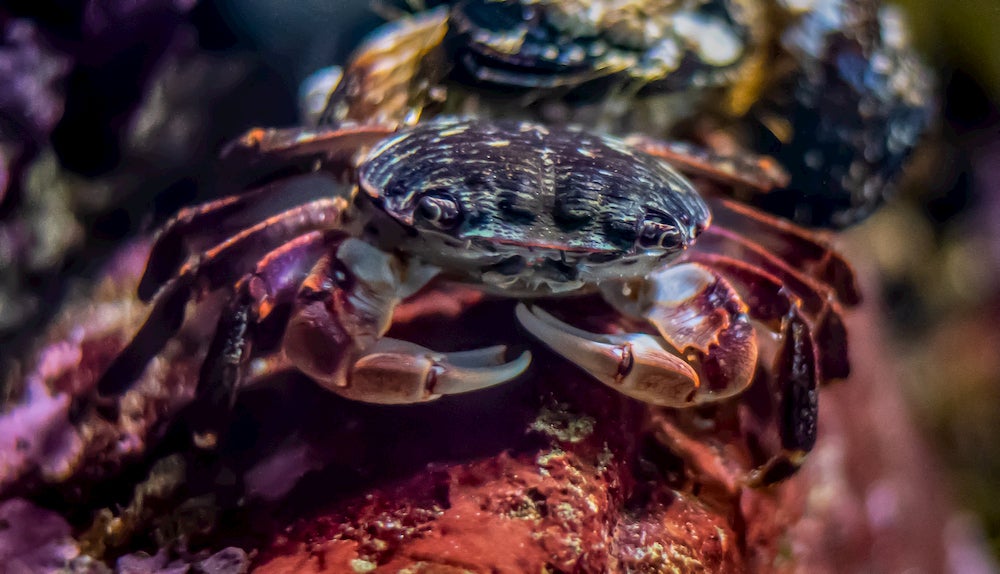
- Where? — Striped shore crabs can be found in High and Middle Tide zones. Usually found in crevices, under rocks, in and around tide pools, or on sandy beaches. They’re the most common crab species seen across the entire west coast of North America.
- Colors? — The majority of its body/shell is usually brown, purple, or black. Plus it has distinctive green stripes, running horizontally along its body. Their legs tend to have white patches on them.
- Size? — Typically seen at just one to three inches wide. Although some larger specimens have been seen on occasion.
- Other Info — They are very good at detecting predators, so they are impressively quick on their feet and will scurry away at the first sign of danger. They spend at least half their time out of water, and regularly scavenge for food in and out of the water. Can spend as much as three straights days on land, without needing to wet its gills for oxygen.
Hairy Hermit Crab
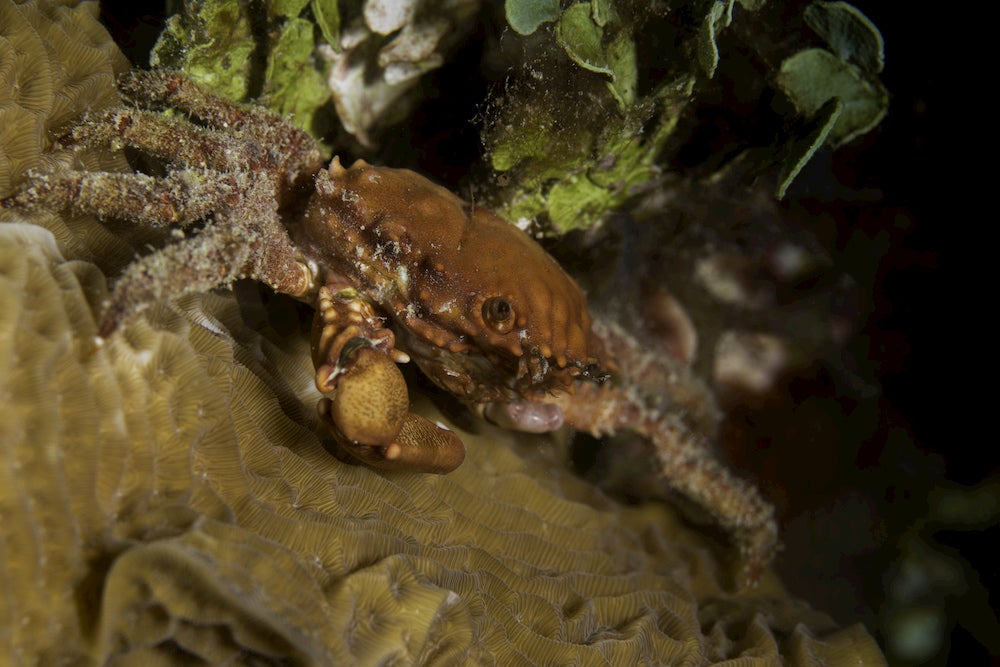
- Where? — Low tide zone, all the way down to 100+ feet deep in the subtidal zone. Can be seen from Alaska down to Baja California, Mexico. However, they are seen less frequently as you go south, and the water gets warmer.
- Colors? — Brown, black, and an olive greenish color. A distinguishing feature of these hermit crabs is the white and blue bands often seen on their legs. Plus their antennas are grayish-brown with noticeable white bands on them.
- Size? — Very small. Ranging from 0.75 inches to nearly three inches in length, but the majority are usually right around one inch long.
- Other Info — As with all species of Hermit Crabs, the Hairy Hermit Crab lives in an abandoned (gastropod) shell to protect itself. Therefore, you’ll see some variety in the appearance of their shells.
Other West Coast Tide Pool Creatures
Purple Sea Urchin
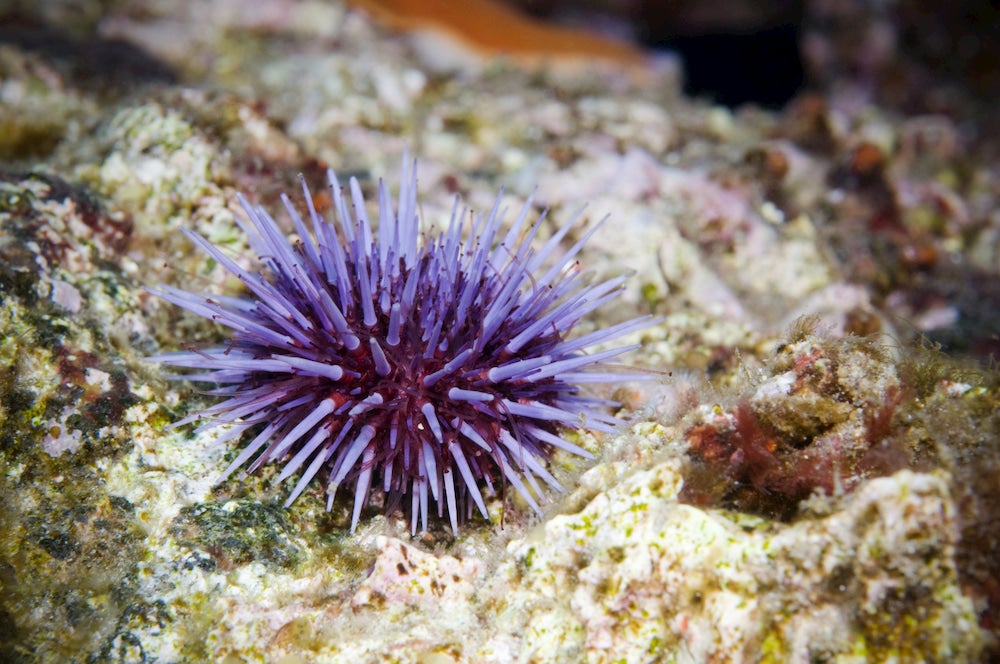
- Where? — Low tide zone, near the shore, and as far down as 160-meters in the subtidal zone. Are commonly seen across the entire west coast, from Vancouver B.C. in Canada, down into the warm waters of Mexico.
- Colors? — Vibrant purple. Although some juveniles that have yet to turn purple, will be more of a pale green color.
- Size? — Most are roughly three inches in diameter, give or take a couple inches.
- Other Info — Found clinging on to rocks, or made made structures like piers and bridge pilings. They can live for up to 70 years, thanks to the sharp spines covering their body and protecting them from predators.
California Mussel
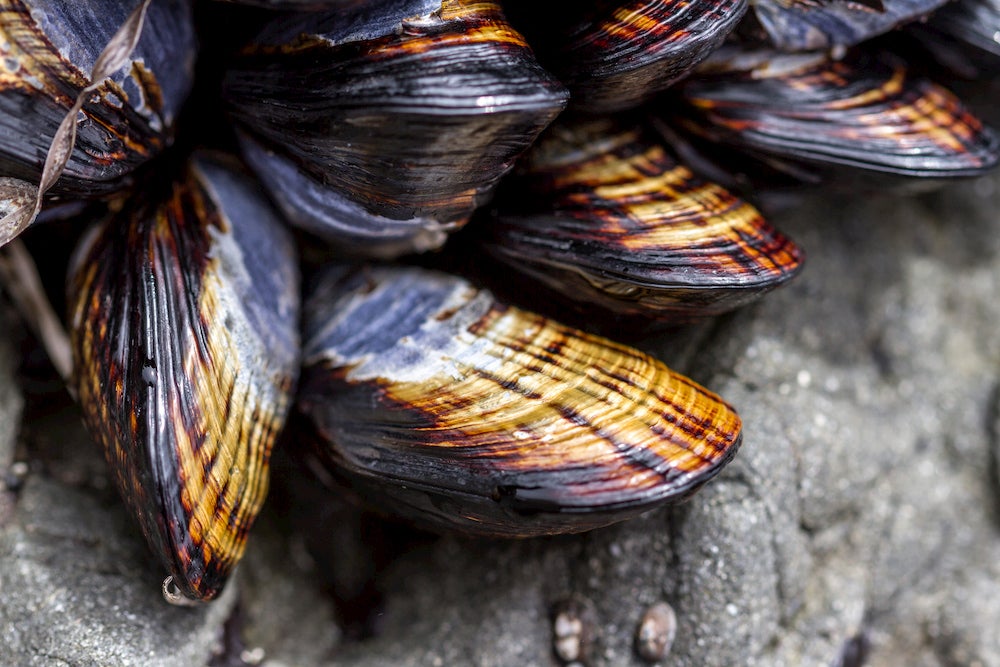
- Where? — Clustered together in the high tide zone, and less commonly, in middle tide zone. They are usually found clinging to rocks in wave-exposed areas.
- Colors? — Their thick shell is typically a dark blue-black color, with horizontal ribs and growth lines scattered across it. The inside of the shell has a blue and faintly pearl-like surface.
- Size? — Generally about two inches in length, and about an inch wide.
- Other Info — This is an edible species that is found all over the west coast of the United States. Although, in the summer months they may become poisonous to humans if they ingest a certain kind of plankton.
This article was brought to you by Stream2Sea.
Their reef-safe sunscreen is the perfect product for hunting for tide pool creatures!
Related Campgrounds
- San Simeon Creek Campground, CA
- San Onofre Campground, CA
- Kalaloch Camping, WA
- Ruby Beach Camping at Kalaloch, Olympic National Park, WA
- Beach Camping Washington at Third Beach
Popular Articles:
Articles on The Dyrt Magazine may contain links to affiliate websites. The Dyrt receives an affiliate commission for any purchases made by using such links at no additional cost to you the consumer.

